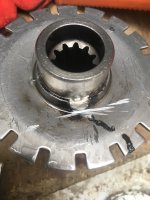Hello all I’m new here and come across this forum when looking for answers!
4270 24x24 power shuttle won’t move when at low revs. Also the Rev counter stopped working about the same time.
I’ve changed backend oil and all the filters and put in a new engine speed sensor.
Should there be 12v at the socket on the tractor, where Rev sensor plugs in.
I’ve checked the fuses as well, all seems ok there!
Thanks
4270 24x24 power shuttle won’t move when at low revs. Also the Rev counter stopped working about the same time.
I’ve changed backend oil and all the filters and put in a new engine speed sensor.
Should there be 12v at the socket on the tractor, where Rev sensor plugs in.
I’ve checked the fuses as well, all seems ok there!
Thanks


